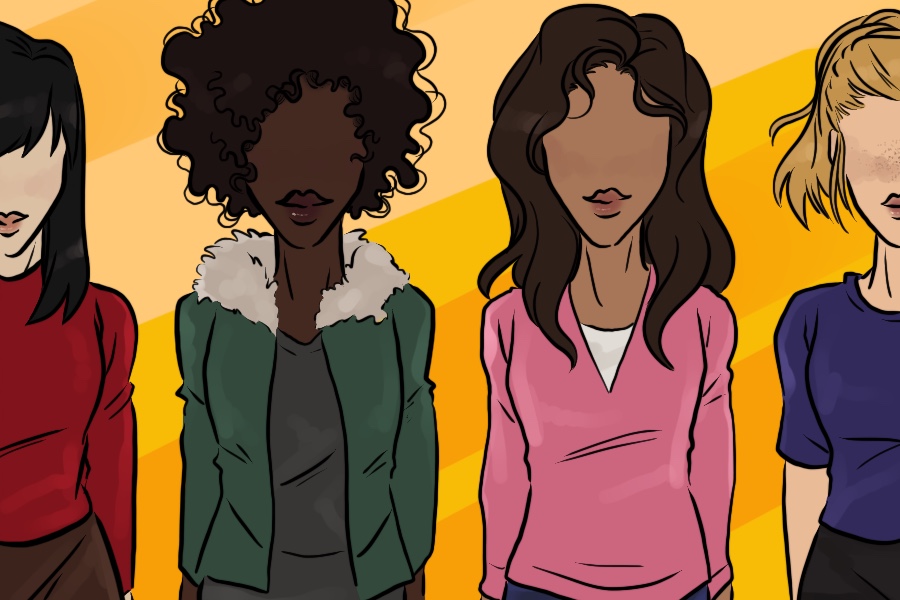
Our deep-rooted perceptions of beauty can seriously damage women’s mental and physical wellbeing
 In a world inhabited by 7.6 billion people, who determines what qualities meet the standards of beauty? Beauty seems like such a simple, positive concept, but a lack of self-esteem and body positivity is linked to depression, anxiety and suicidal tendencies — afflictions that can affect multiple aspects of life from relationships to work. Not feeling beautiful can have serious negative impacts on one’s life, which is why billion-dollar industries have popped up to fill the voids in our society’s acceptance of all types of women.
In a world inhabited by 7.6 billion people, who determines what qualities meet the standards of beauty? Beauty seems like such a simple, positive concept, but a lack of self-esteem and body positivity is linked to depression, anxiety and suicidal tendencies — afflictions that can affect multiple aspects of life from relationships to work. Not feeling beautiful can have serious negative impacts on one’s life, which is why billion-dollar industries have popped up to fill the voids in our society’s acceptance of all types of women.
India’s skin-lightening industry generated $432 million in 2017 and is growing 17 percent annually, playing a major role in the $10 billion global market dedicated solely to changing the natural color of people’s skin. Throughout my life, I’ve been told by innumerable relatives to try different products, scrub my skin harder, stay out of the sun, try X, Y and Z — all to lighten my naturally dark skin. Although my extended family has become increasingly progressive over the years, the culturally ingrained tendencies of valuing a woman for her looks lie deep. In some regions of India, women are considered unfit to marry if they don’t maintain a proper physique, fair skin and overall good looks. In Indian film industries, it’s a very, very uncommon occurrence to see a dark-skinned woman on screen. Almost all actresses are fair-skinned in Bollywood.
The damaging emotional effects of this type of thinking have spurred movements like the “Dark is Beautiful” campaign, held by the Indian nonprofit Women of Worth in the form of workshops and advocacy. Another concerning thought is the impact of using so many beauty products to enhance looks. On average, men use six personal care products, whereas teenage girls use around 17. The average white American woman exposes herself to 168 personal care product chemicals in a day, and the toxic exposure for women of color is thought to be even higher.
But it’s surely not just India with these beauty biases that hold women back from being confident in their own skin. In Seoul, South Korea, often recognized as the plastic surgery capital of Asia, girls as young as 12 years old are receiving surgery to adopt more “Westernized features,” such as larger eyes, high profiles and slim noses. Asian pop culture heavily focuses on exaggerated cuteness, with concepts such as “kawaii” encouraging fragile, excessive femininity.
Social scientists have determined through several studies, such as one conducted by the Perception Institute, that African American women’s hair was rated less attractive and less professional when it’s natural than when it’s synthetically straightened. In 2017, Mystic Valley Regional Charter School suspended two black students for wearing their hair in braids, deeming it “distracting,” an action that was admonished by the Lawyers’ Committee for Civil Rights and Economic Justice. Notably in the U.S., some aspects of different cultural styles, ranging from dreadlocks to Native American apparel, are appropriated as fashion statements, which raises controversial questions — specifically of whether these statements should be seen as appreciation or disrespect.
In our daily lives, there are so many instances when a woman’s beauty is considered more important than her other qualities. Receptionists throughout the world are expected to meet standards of beauty that reach far beyond what should be expected for the job. High school men (at least at my school) rank girls on a scale to determine the “prettiest” one. People pass comments on others’ looks without considering the insecurities those people may already be harboring. We’re bombarded with photos of women digitally altered to unrealistic levels of beauty.
When you search online for images of the term “beauty,” the top results are women wearing heavy amounts of makeup — a shocking revelation since not a single picture of a joyful, natural-looking woman, or even a man for that matter, is used to represent beauty in our society. Why is the burden of beauty placed solely upon women, and why are our standards of beauty so flawed throughout the world?
Despite this, there are currently many movements to prevent body image insecurities in women. Aerie, the lingerie company under American Eagle, stopped airbrushing its models in 2014 and sells comfortable, realistic products that have been directing attention away from Victoria’s Secret’s over-the-top, extremely sexualized apparel.
With popular songs such as “Most Girls” by Hailee Steinfeld, “Sit Still, Look Pretty” by Daya and “Scars to Your Beautiful” by Alessia Cara, powerful young singers encourage women to feel comfortable and confident however they choose — whether that means giving up makeup or wearing it everyday, wearing short dresses or sweatpants. This ultimately means embracing themselves while also understanding that they can be powerful, not only good enough to “sit still, look pretty” for their lovers. The standards of beauty vary greatly between cultures. But the era of toxic necessity for perfection needs to end for it to be replaced with increasing momentum toward feeling comfortable and confident instead of meeting the impossible expectations of our communities.
Written by: Akshita Gandra — agandra@ucdavis.edu
Disclaimer: The views and opinions expressed by individual columnists belong to the columnists alone and do not necessarily indicate the views and opinions held by The California Aggie.



